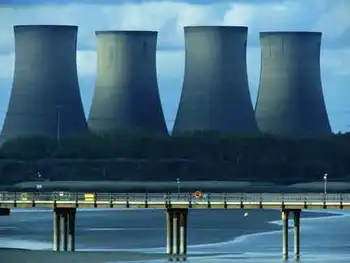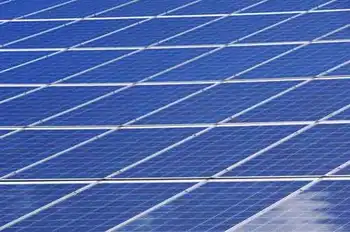Plant may unlock TennesseeÂ’s natural gas potential
By FinanzNachrichten
CSA Z463 Electrical Maintenance -
Our customized live online or in‑person group training can be delivered to your staff at your location.

- Live Online
- 6 hours Instructor-led
- Group Training Available
“TVA will need up to 160 million cubic feet of natural gas a day for the plant scheduled to come on line in late 2011. Tennessee is now producing about 16 million cubic feet of gas, but has immense potential to produce a great deal more gas,” said Scott Gilbert, President, Tennessee Oil& Gas Association (TOGA).
Gilbert, lead geologist for Vinland Energy, Oak Ridge, said that at least half of the counties in Tennessee have oil and gas potential.
“At this time, we are producing oil and gas from just 11 eastern and middle Tennessee counties, but there is reason to believe that most other eastern and middle Tennessee counties have potential for the production of gas or oil,” he added.
Gilbert noted that while there are several shallow and deep horizons capable of producing oil and gas in Tennessee, the most potential lies in a shale formation, called the Chattanooga Shale.
“The Chattanooga Shale lies like a blanket under the entire Cumberland Plateau and Highland Rim of eastern and middle Tennessee and in scattered locations in the rest of East Tennessee, at a depth of less than 1,000 feet to more than 4,000 feet,” Gilbert said. He noted that the shale gets deeper as you travel east.
“This rock formation, called the Chattanooga Shale in Tennessee is similar to the Marcellus Shale of New York and Pennsylvania and the Huron Shale of Eastern Kentucky. All three are Devonian Shales and underlie almost the entire Appalachian Basin from New York to Alabama.
“Geologists agree that as a resource, the shale is huge, but the challenges are many. Shales are different from conventional source rocks and we are just now learning how to unlock the shale’s potential,” he said.
Gilbert noted that the “shale play” started with the Barnett Shale play in Texas nearly a decade ago. The Barnett field is proven to have 2.5 trillion cubic feet of natural gas and is estimated to contain as much as 30 trillion cubic feet.
“The economic success of the Barnett Shale, which began production in 1999, has spurred companies to search for other sources of shale gas including the Antrim Shale in Michigan, the Fayetteville Shale in Arkansas, the Haynesville shale in Louisiana as well as the Marcellus Shale in Pennsylvania and now the Chattanooga Shale in Tennessee.
“The Chattanooga Shale is not as deep as the Marcellus. Deeper wells have higher pressure, which generally result in more production but also higher costs,” Gilbert pointed out. “However, the Chattanooga shale is certainly worth exploring for and producing. Several Tennessee companies already have commercially successful Chattanooga Shale wells, both vertical and horizontal. Now with a very large potential market for our gas to TVA, we lack only the infrastructure, which will come with the additional leasing and drilling we anticipate,” Gilbert predicted.
The proposed natural gas plant is to be located beside the John Sevier coal fired power plant, which supplies electricity to upper east Tennessee. The purpose is to reduce the emissions from the existing plant. The large majority of the coal currently burned in the John Sevier Plant is imported from neighboring states.
“The new gas fired plant will allow the State of Tennessee to provide homegrown, clean burning natural gas, which will result in more jobs and increased taxes going into state coffers in the form of severance tax from the production of the natural gas,” Gilbert noted.











